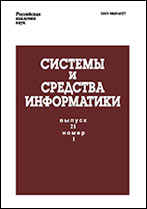|
Mapping of the Khabarovsk Region arable lands by machine learning using Sentinel-2 images
I. O. Prokhoretsa, A. S. Stepanovb
a Computing Center of the Far Eastern Branch of the Russian Academy of Sciences, 65 Kim Yu Chen Str., Khabarovsk 680000, Russian Federation
b Far Eastern Research Institute of Agriculture, 13 Klubnaya Str., Vostochnoe 680521, Khabarovsk Territory, Russian Federation
Abstract:
Automated classification of arable lands using machine learning methods is one of the most important tasks in the transition to digital agriculture. The classification of arable lands in the Khabarovsk Region was carried out using random forest (RF), minimum distance (MD), and K-means clustering methods based on Sentinel-2 images for July, August, September, and October 2022. The values of spectral bands, EVI (Enhanced Vegetation Index), and NDVI (Normalized Difference Vegetation Index) were considered as input data. Based on the results of statistical processing, it was found that the RF method demonstrated the greatest stability when changing the date of shooting and the type of input data. The accuracy of recognition of arable lands in the Khabarovsk Region in 2022 was 92.5% when using NDVI values calculated from the September Sentinel-2 image in the classifier. The proposed approach can be used for automated classification and subsequent mapping with expert correction of arable lands in the southern part of the Far East.
Keywords:
mapping, machine learning, satellite monitoring, arable lands, classification, Khabarovsk Region.
Received: 31.01.2024
Citation:
I. O. Prokhorets, A. S. Stepanov, “Mapping of the Khabarovsk Region arable lands by machine learning using Sentinel-2 images”, Sistemy i Sredstva Inform., 34:1 (2024), 57–69
Linking options:
https://www.mathnet.ru/eng/ssi924 https://www.mathnet.ru/eng/ssi/v34/i1/p57
|

| Statistics & downloads: |
| Abstract page: | 27 | | Full-text PDF : | 9 | | References: | 9 |
|




 Contact us:
Contact us: Terms of Use
Terms of Use
 Registration to the website
Registration to the website Logotypes
Logotypes








 Citation in format
Citation in format 